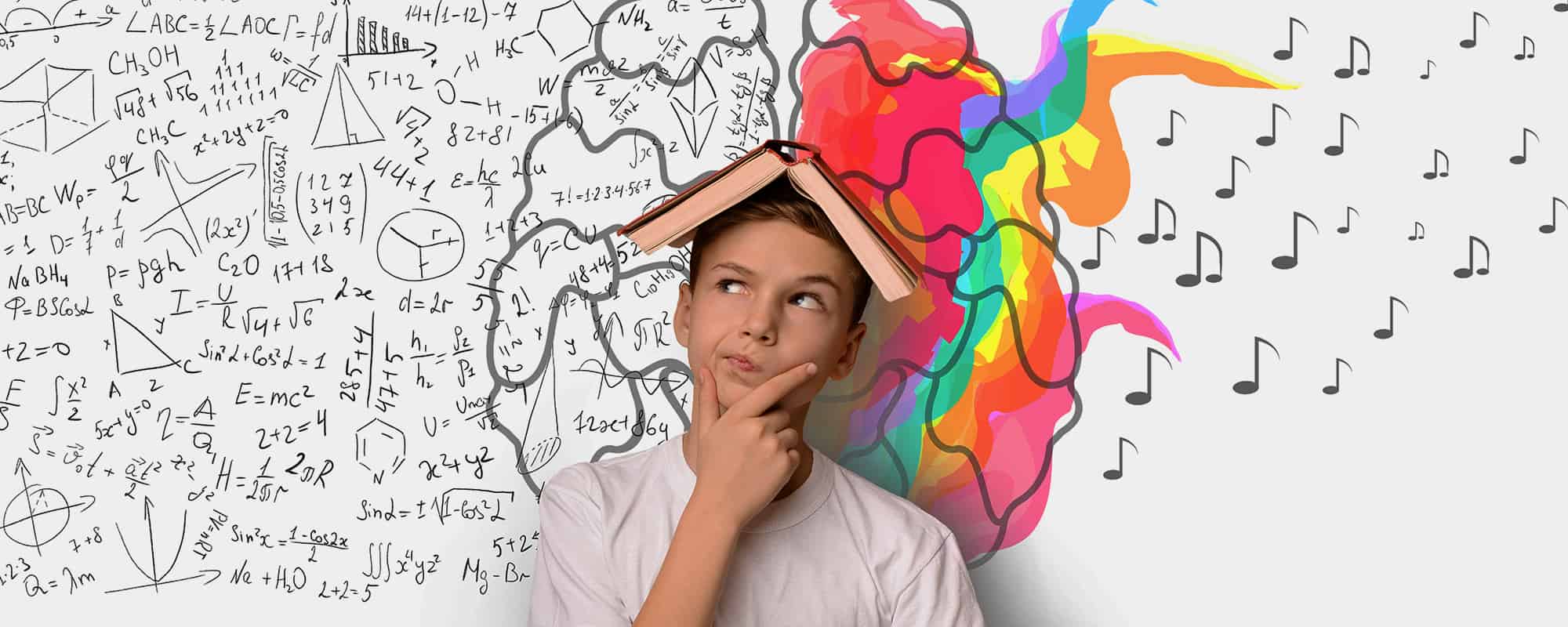Want to help your child to love learning, but not sure where to start?
Begin by understanding their brain. But that doesn’t mean working out your little learner’s “type” of brain. Actually, decades of neuroscience research has shown that every human brain benefits from a range of learning strategies that nurture, challenge and ultimately grow our grey matter.
Brain researchers have debunked the idea that a person has a single “learning style” that suits them best. And trying to just use one “best” strategy can actually be a roadblock to a child’s learning development.
CQUniversity’s Professor Ken Purnell is Head of Course for Educational Neuroscience, and he says effective learning requires information to be absorbed in ways that are most relevant to the content, while challenging the student and appealing to every part of their brain. Here’s Prof Purnell’s best tips to engage any learner, by starting with their brain.
Stay Social
We often stereotype homework as a solitary activity – the student shut away in their room and buried in books. But actually, brains learn best in a social environment. Neuroscience tells us our brains need stimulation and connection to survive and thrive. Close supportive relationships trigger positive emotions, neuroplasticity and learning – so reading or working through assignments with your child, and exploring topics with them, will help switch on their memory-making and comprehension.
It’s not just up to parents though – friends and classmates are also vital. So don’t assume that your child’s Zoom or online chat is distracting them from learning. While the COVID-19 pandemic has disrupted many aspects of education, digital platforms have given students new ways to connect. In some cases, that’s also expanded their peer networks, which then expands language, experience, interests and ultimately learning.
A sense of belonging is fundamental for the brain to feel relaxed and comfortable to learn at its best – so it’s critical that families and schools build supportive environments for their learners.
Tip: Create a homework space in the family living area, and be involved in the learning, so your child knows they’re learning within a supportive community.
Same But Different
Repetition is the key to most learning – but varying the repetition ensures our brains don’t get bored. “Nuanced repetition” means presenting the same information in different ways to consolidate our learning, initially at close intervals such as daily, and then less often across six months. On a molecular level, neuroscientists suspect there’s a physical process that needs to be completed to form a memory – and us not remembering something is a result of that not happening.
Therefore, reading the information, seeing it illustrated, writing it down, experiencing it in ways that appeal to our senses, all prompt our physical memory-making. And building the information into a story can supercharge connection to it. If the topic is volcanoes, what about a first-hand account from an eruption witness? Personal connection is also effective – could you recount how you learnt the information when you were at school? Then revisiting the information regularly trains our brain to recall the information that’s already stored in our long-term memory, and build on it.
Tip: Work with your child to create flashcards (either on cardboard or in a flashcard app like Anki or Brainscape) that captures information they want to learn. Put reminders in the calendar to revisit them over six months and be sure to celebrate their progress.
Balance The Brain
The brain has two hemispheres – the right brain handles creativity, imagination and strong emotions, while the left hemisphere leads cognitive functions such as speech, language and logic. But people aren’t “right-brained” or “left-brained” – both sides of our brains work for every one of us, if we just decide to use them. Harvard researcher Professor Tracey Tokuhama-Espinosa debunked the left-brained, right-brained myth, and many others, in her 2018 book Neuromyths. In fact, we all learn best if the teaching presents information in ways that trigger both sides of the brain.
Tip: Don’t just get stuck in the textbooks – look for songs, YouTube videos or even TikToks that cover the topic and challenge your student to create something of their own.
Move It!
The brain and body aren’t separate, they’re both part of one whole – it’s only anatomy books that divide them up. Physical activity stimulates the entire brain with more oxygen, growing new neurons in the hippocampus (the learning and memory centre) and boosting frontal lobe (problem-solving centre) plasticity. Our kids can’t effectively learn if their bodies and brains aren’t being stimulated with physical activity, at least 30 minutes a day and ideally more than an hour.
Good nutrition and adequate sleep are also essential to learning. Australia’s sleep guidelines recommend children aged 5 to 13 get 9 to 11 hours uninterrupted sleep each night. And 14 to 17-year-olds should aim for 8 to 10 hours – concerningly, most only average 6.5 to 7 hours! The good news – more physical activity throughout the day will also promote better sleep at night.
Tip: Trying to memorise times tables or spelling words? Do it while throwing a ball in the backyard.
Brains Need Breaks
More than 90 percent of learning is done unconsciously and only a small amount happens when our attention is really focused. Ever woken up with a great idea in the middle of the night? That’s because your brain is still processing, even when you’re asleep. Now that doesn’t mean don’t study, but it does mean give yourself a break. Focus on challenging learning should be capped at about 20 minutes for primary kids and 30 minutes for secondary, before a five-minute break with plenty of opportunities to get up and get moving.
American neurologist, teacher and author Dr Judy Willis calls these “brain breaks”, that allow brain regions blocked by stress or high-intensity work to revitalise. She advocates for brain breaks that switch activity to different brain networks and allow the resting pathways to restore their calm focus, for optimal mood, attention and memory.
Tip: Encourage your child to take breaks for brain-food snacks, get outdoors and get moving.
Keep Growing
A student who believes they only learn one way might develop a “fixed mindset”. That’s the incorrect idea that human attributes, like intelligence or the ability to learn, cannot change. Instead of focusing on a preferred learning style as your child’s “best” one, help them appreciate all the different ways they take in information. That requires an experimental approach – but it will help your child discover and connect with the many ways they can learn. Then make sure you celebrate with them when they realise a new approach is working.
Setting and working towards learning goals also helps the brain, as it gets a dopamine hit when that goal is achieved. Guide your child to ensure the goals aren’t too easy – you don’t want to bore them. But they must be achievable. Having a “growth mindset”, that you are capable of learning new things, is backed by science. Neuroplasticity means brains can change, through creating, strengthening, weakening, or dismantling connections between its neurons.
Tip: Explore the power of “yet” with your child – it’s not that we can’t do something, it’s that we can’t do it YET!





